In the previous post, we discussed Creating a Stable Lower Body for Better Golf Balance Today, we’re focusing on how you can enhance your iron consistency.
Many amateur golfers struggle with hitting their iron shots consistently, often resulting in frustrating rounds. However, with a few adjustments, you can improve your iron play significantly.
I will explore three fundamental aspects Unlocking Consistency in Iron Shots, Advanced Drills and Equipment Considerations for Iron Shots and Advanced Techniques for Consistency and Accuracy in Iron Shots.
Including proper stance and the right shoes and ball, you can achieve more consistent and accurate shots with the best iron. Let’s begin this journey to better iron play, one swing at a time.
Understanding how to hit irons consistently is crucial for improving your golf game. This guide will show you how to hit irons consistently, enhancing your accuracy and performance on the course.
Ball Position: The Foundation of Consistency
Understanding Ball Position
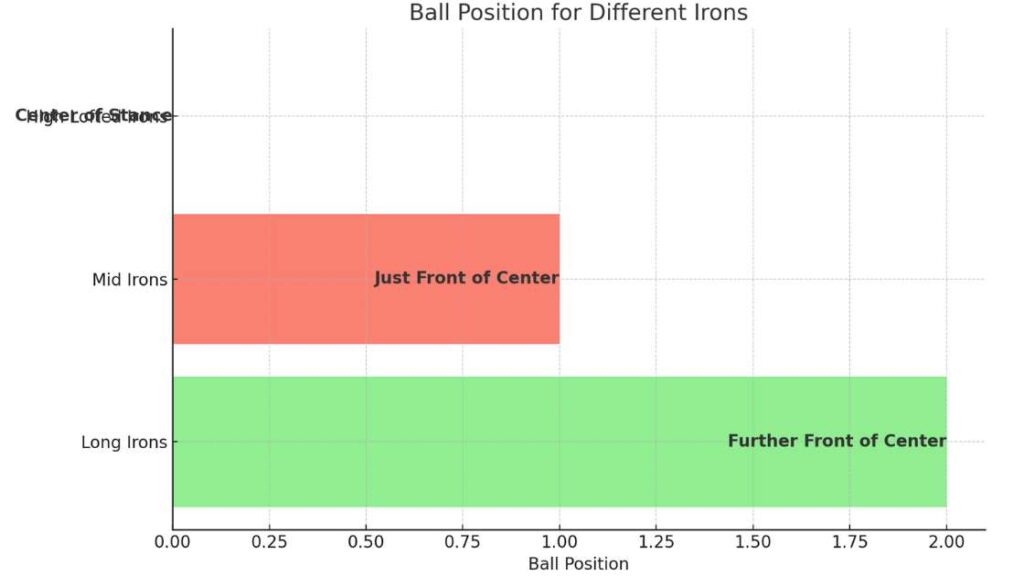
One of the most overlooked aspects of a golf swing is the ball position. Many players set up to the ball without a clear understanding of where it should be in relation to their feet. Correct ball position is crucial for achieving consistent contact and accuracy with your iron shots.
Tips for Ball Position
High Lofted Irons (Pitching Wedge and Wedges)
- Stand with your feet close together.
- Place the ball directly in the center of your stance.
- Take equal steps with both feet to ensure the ball remains centered.
Mid Irons
- Start with your feet together.
- Take a slightly smaller step with your front foot and a wider step with your back foot.
- This positions the ball just in front of the center of your stance.
Long Irons
- Begin with your feet together.
- Take an even smaller step with your left foot and a wider step with your right foot.
- This places the ball further forward in your stance.
Importance of Ball Position
The correct ball position ensures a consistent relationship between your club and the ground. For instance, when hitting a nine iron, the ball should be in the middle of your stance. Precise ball placement helps you make solid contact, leading to better shots.
Practicing Ball Position
To master ball position:
- Practice regularly, making sure the ball is in the correct spot.
- Use video analysis or have a friend take pictures of your setup to ensure consistency.
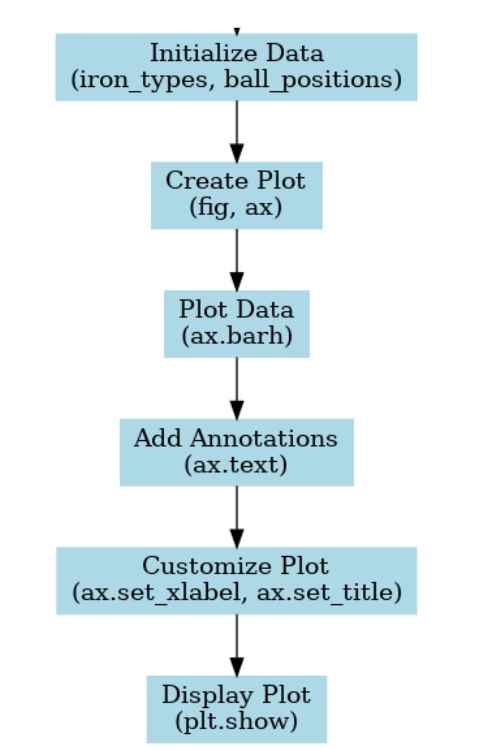
Steps to Find Correct Ball Position
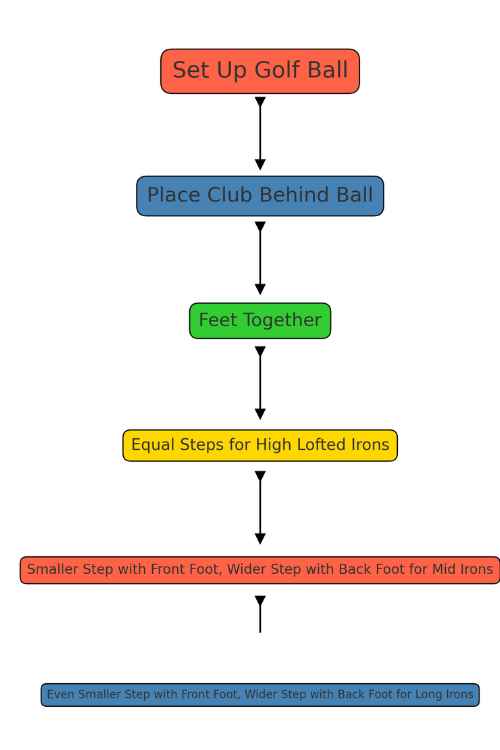
Ball Position for Various Irons
| Iron Type | Ball Position |
| High Lofted Irons | Center of Stance |
| Mid Irons | Just Front of Center |
| Long Irons | Further Front of Center |
Key Tips for Consistent Ball Position
- Always start by placing the club behind the ball.
- Keep feet close together initially.
- Adjust steps according to the iron being used.
Distance from Golf Ball and Arm Position

Distance from the Golf Ball: Achieving Comfort and Control
Finding the Right Distance
Inconsistent distance from the golf ball can lead to erratic shots. Sometimes you might stand too close, other times too far. Finding a comfortable, repeatable distance is essential.
Steps to Find the Right Distance
Set the Club Behind the Ball First
- Always position your club behind the ball before taking your stance.
- This serves as the foundation for your setup.
Check Arm Position
- Your arms should hang naturally from your shoulders.
- There should be a comfortable gap between the club and your legs, roughly the width of your hand when stretched from little finger to thumb.
Common Mistakes
Standing Too Close
- If you are too close, you risk hitting the wrong part of the club and producing poor shots.
Standing Too Far
- If you stand too far, maintaining consistent contact becomes challenging.
Ensuring Consistent Distance
To maintain a consistent distance:
- Always place the club behind the ball first.
- Ensure your arms hang naturally and are almost straight down.
Body Movement: Hitting the Ball First, Then the Ground
Proper Body Movement
When hitting irons, it’s crucial to strike the ball before the ground. Many golfers struggle with this because their body tends to move backwards during the swing.
Tips for Correct Body Movement
Focus on the Middle of Your Body
- As you swing, ensure the middle of your body moves around your front foot (left foot for right-handed golfers).
Avoid Leaning Back
- Leaning back causes inconsistent contact, leading to thin or fat shots.
- Make sure your weight shifts towards the target as your hips twist through the shot.
Practicing Body Movement
To practice this movement:
- Make slow practice swings, focusing on moving your body towards the target.
- Ensure your weight shifts to your front foot during the swing.
Advanced Techniques for Consistency and Accuracy in Iron Shots
In the first part of our guide, we covered the basics of ball position, distance from the ball, and body movement. Now, let’s dive into more advanced techniques and drills that will further enhance your consistency and accuracy with iron shots. These methods will help you refine your skills, ensuring you can perform under various conditions on the golf course.
Understanding Swing Path and Clubface Control
Swing Path: The Road to Precision
The path of your swing significantly impacts the flight and direction of your golf ball. A consistent swing path is vital for accurate iron shots.
In-to-Out Swing Path
- Promotes a draw shot.
- Helps in achieving a powerful and controlled shot.
Out-to-In Swing Path
- Promotes a fade shot.
- Useful for managing difficult course conditions.
Drill: Swing Path Practice
Set Up Two Alignment Sticks
- Place one stick parallel to your target line.
- Position the other stick on an angle that matches your desired swing path.
Practice Swinging
- Focus on swinging along the path set by the sticks.
- Use slow-motion swings to build muscle memory.
Clubface Control: Directing Your Shots
The position of the clubface at impact determines the direction of your shot. Ensuring that the clubface is square to the target at impact is crucial.
Square Clubface
- The clubface should be perpendicular to your target line at impact.
- Promotes straight shots.
Open Clubface
- The clubface is angled away from the target.
- Produces a fade shot.
Closed Clubface
- The clubface is angled towards the target.
- Produces a draw shot.
Drill: Clubface Awareness
Impact Bag Drill
- Use an impact bag or a heavy cushion.
- Practice hitting the bag with a square clubface.
- Focus on the feeling of the clubface being square at impact.
Mental Approach: Visualization and Focus
Visualization: Seeing Success Before It Happens
Visualization is a powerful tool that can improve your performance by mentally rehearsing your shots.
Pre-Shot Routine
- Visualize the flight of the ball before you swing.
- Imagine the ball’s trajectory, landing, and roll.
Mental Imagery
- Picture yourself executing the perfect swing.
- Focus on the key points of your swing, such as ball position and body movement.
Focus: Staying in the Moment
Maintaining focus during your swing is essential for consistency.
Breathing Techniques
- Use deep breathing to calm your mind.
- Focus on your breathing to stay present.
Mindfulness
- Practice mindfulness techniques to enhance your concentration.
- Stay aware of your surroundings without letting them distract you.
Practicing Under Pressure: Simulating Course Conditions
Pressure Practice: Making Every Shot Count
- Practicing under pressure can help you perform better during actual rounds.
Competition Drills
- Compete against yourself or others in practice.
- Set goals for each practice session, such as hitting a certain number of greens in regulation.
Course Simulation
- Simulate course conditions during practice.
- Play practice rounds on the range, imagining each shot as if you were on the course.
Steps to Effective Pressure Practice
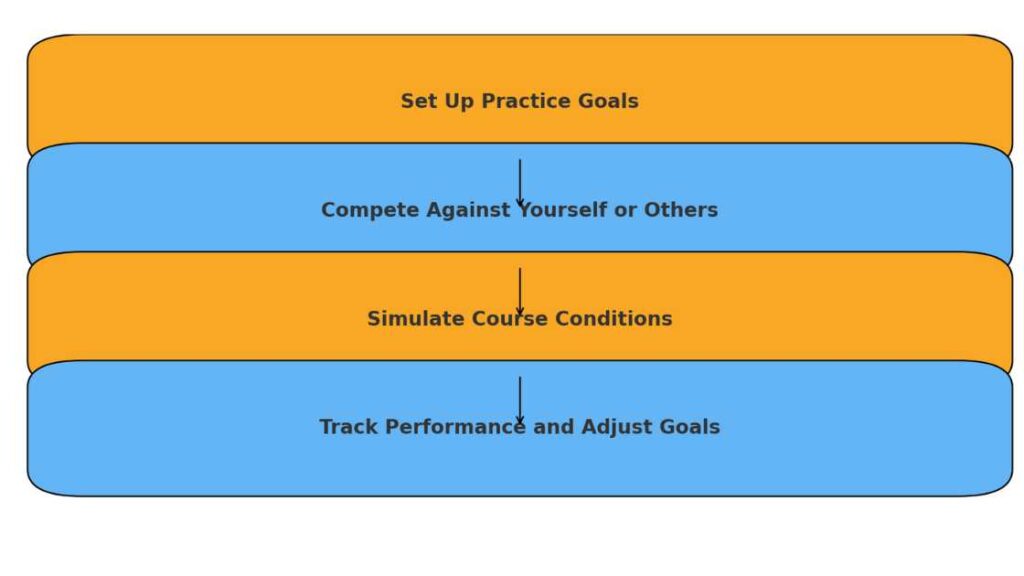
Advanced Drills for Iron Shots
Drill: The Gate Drill
Set Up Two Tees
- Place two tees slightly wider than your clubhead, forming a gate.
- Position the ball in the center of the gate.
Practice Swings
- Focus on swinging through the gate without hitting the tees.
- This drill promotes a consistent swing path and clean contact.
Drill: The Divot Drill
Mark a Line on the Ground
- Use chalk or a stick to draw a line on the ground.
- Position the ball slightly in front of the line.
Practice Swings
- Aim to hit the ball first, then the ground, producing a divot in front of the line.
- This drill ensures proper ball contact and weight shift.
Visual Aids for Advanced Techniques
Swing Path Types
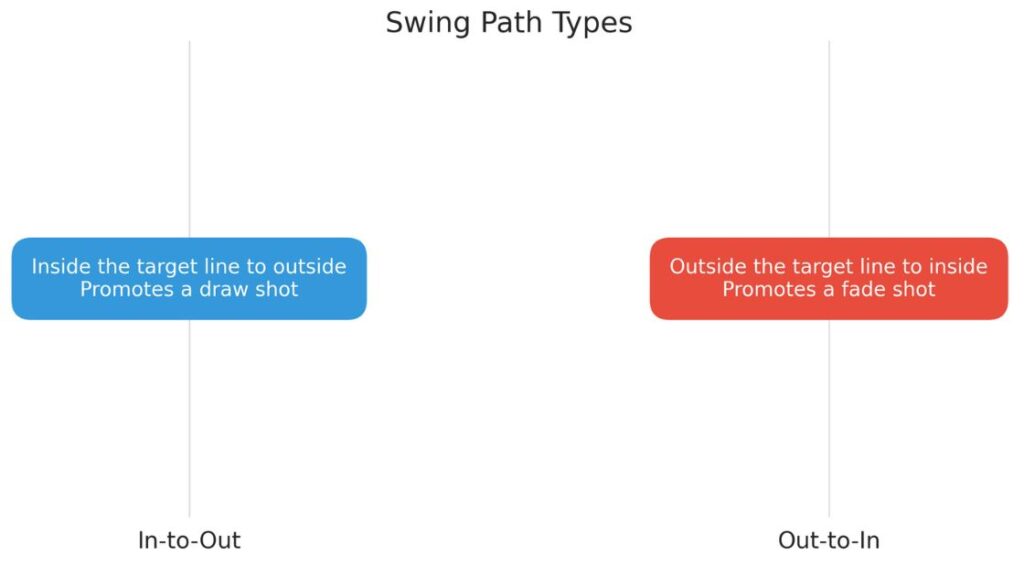
Steps to Master Swing Path
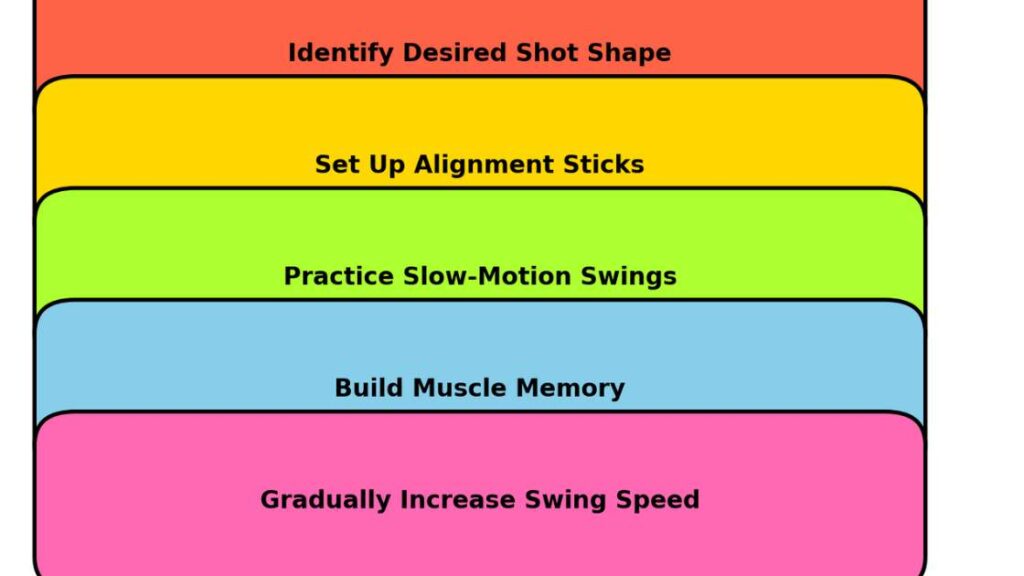
Clubface Position and Shot Outcome
| Clubface Position | Description | Shot Outcome |
| Square | Perpendicular to target line | Straight Shot |
| Open | Angled away from target | Fade Shot |
| Closed | Angled towards target | Draw Shot |
Tips for Effective Visualization
- Close your eyes and imagine the perfect shot.
- Picture the ball’s flight, landing, and roll.
- Focus on the sensations of a successful swing.
Practicing Consistency: Routine and Repetition
Establishing a Pre-Shot Routine
A consistent pre-shot routine can greatly enhance your performance. This routine helps you get into the right mindset and ensures you set up correctly for each shot.
Visualize the Shot
- Stand behind the ball and visualize your shot.
- See the trajectory, landing, and roll.
Set Up Your Stance
- Place the club behind the ball.
- Position your feet according to the ball position guidelines discussed earlier.
Check Alignment
- Align your body parallel to the target line.
- Ensure your feet, hips, and shoulders are aligned.
Execute the Swing
- Take a deep breath.
- Focus on a smooth, controlled swing.
Drill: Pre-Shot Routine Practice
Repetition
- Practice your pre-shot routine for every shot during practice sessions.
- Make it a habit, so it becomes second nature on the course.
Consistency
- Ensure your routine is consistent for every shot.
- This consistency will translate to better performance during rounds.
Advanced Drills and Equipment Considerations for Iron Shots
Mastering how to hit irons consistently involves advanced drills and understanding equipment nuances. Utilize video analysis and seek professional guidance to refine technique. Consistency in practice and patience are key to achieving reliable iron play.
In the final part of our guide, we will delve deeper into advanced drills to refine your skills further and discuss equipment considerations that can enhance your iron play. Additionally, we will provide a comprehensive practice plan to help you implement what you’ve learned effectively.
Advanced Drills for Enhanced Performance
Drill: The Alignment Drill
Set Up Alignment Aids
- Use alignment sticks or clubs to create a “railroad track” parallel to your target line.
- Place one stick along your foot line and another along the target line.
Practice Swings
- Focus on aligning your feet, hips, and shoulders parallel to the sticks.
- Practice hitting shots while maintaining this alignment.
Drill: The Impact Tape Drill
Use Impact Tape or Powder
- Apply impact tape to your clubface or use impact powder on the golf ball.
Analyze Contact Points
- Hit several shots and observe the marks on the tape or powder.
- Adjust your swing to ensure consistent contact in the center of the clubface.
Drill: The Tee Drill
Set Up a Tee Line
- Place several tees in a line on the ground, spaced about an inch apart.
Practice Hitting Tees
- Practice hitting each tee without disturbing the others.
- This drill helps you maintain a consistent swing path and ball contact.
Equipment Considerations: Choosing the Right Irons
Custom Fitting: Tailoring Clubs to Your Swing
Why Custom Fitting Matters
- Custom fitting ensures that your clubs match your swing characteristics.
- It can improve accuracy, distance, and consistency.
Fitting Process
- A professional fitter will analyze your swing using launch monitors and other tools.
- They will recommend adjustments in club length, lie angle, shaft type, and grip size.
Benefits of Custom Fitting
Custom fitting for irons ensures optimal club specifications tailored to your swing, enhancing consistency and accuracy.
By analyzing factors like shaft length and flex, lie angle, and grip size, you can improve your game significantly. Discover how to hit irons consistently with personalized equipment adjustments.
| Benefit | Description |
| Improved Accuracy | Custom fitting ensures the club’s length, lie angle, and shaft are tailored to your swing, resulting in better shot accuracy. |
| Enhanced Distance | Clubs that fit your specifications allow for more efficient energy transfer, leading to increased distance on shots. |
| Consistent Ball Flight | Properly fitted clubs promote a consistent ball flight, reducing unwanted spin and errant trajectories. |
| Increased Confidence | Knowing your clubs are tailored to your swing can boost your confidence, which is crucial for consistent performance. |
| Reduced Risk of Injury | Clubs that match your physical characteristics help to prevent strain and injury by promoting proper swing mechanics. |
| Better Feel and Comfort | Custom fitting provides clubs that feel comfortable in your hands, enhancing your overall feel for the game. |
| Optimized Launch Conditions | Tailored clubs help in achieving optimal launch conditions for each shot, improving overall performance on the course. |
| Personalization | Custom fitting allows for personal adjustments, making the clubs feel uniquely yours and suited to your playing style. |
Choosing the Right Shaft
Steel vs. Graphite Shafts
- Steel shafts are heavier, providing more control and feedback.
- Graphite shafts are lighter, offering increased swing speed and distance.
Flex Options
- Shaft flex should match your swing speed.
- Common flex options: Regular, Stiff, Extra Stiff.
Factors to Consider When Choosing Irons
Clubhead Design
- Blade irons offer precision for skilled players.
- Cavity-back irons provide forgiveness and are suitable for most golfers.
Shaft Material and Flex
- Choose based on your swing speed and preference for control or distance.
Grip Size
- Ensure a comfortable grip to enhance control and reduce tension.
Comprehensive Practice Plan: Structuring Your Improvement
Practice Plan Overview
A well-structured practice plan ensures that you work on all aspects of your game systematically. Here’s a comprehensive plan to improve your iron shots over a four-week period.
Week 1: Fundamentals and Alignment
Day 1-2: Ball Position and Distance Drills
- Focus on correct ball position for different irons.
- Practice distance from the ball with proper arm position.
Day 3-4: Body Movement and Impact Drills
- Work on body movement drills to ensure weight shift.
- Use impact tape to analyze and adjust your contact points.
Day 5-7: Swing Path and Clubface Drills
- Practice swing path drills using alignment sticks.
- Focus on maintaining a square clubface at impact.
Week 2: Intermediate Techniques
Day 1-2: Visualization and Focus
- Incorporate visualization techniques into your pre-shot routine.
- Practice mindfulness and focus drills.
Day 3-4: Pressure Practice
- Simulate course conditions and practice under pressure.
- Compete against yourself to set and achieve performance goals.
Day 5-7: Advanced Swing Path and Clubface Control
- Use the Gate Drill to refine your swing path.
- Practice the Divot Drill to ensure proper ball contact.
Weekly Practice Plan Overview
| Week | Focus Area | Description |
| Week 1 | Fundamentals and Alignment | Focus on grip, stance, posture, and alignment basics. |
| Week 2 | Intermediate Techniques | Work on swing mechanics, tempo, and ball striking. |
| Week 3 | Advanced Techniques and Drills | Practice advanced shots, shaping the ball, and drills. |
| Week 4 | Consistency and Course Simulation | Implement consistency strategies and simulate course play. |
Week 3: Advanced Techniques and Drills
Day 1-2: Alignment and Impact Drills
- Refine alignment using the Alignment Drill.
- Focus on impact consistency with the Impact Tape Drill.
Day 3-4: Pre-Shot Routine and Pressure Practice
- Solidify your pre-shot routine.
- Practice under simulated course conditions.
Day 5-7: Equipment Evaluation
- Evaluate your current equipment.
- Consider custom fitting if necessary.
Week 4: Consistency and Course Simulation
Day 1-2: Consistency Drills
- Practice your pre-shot routine consistently.
- Use the Tee Drill to maintain a consistent swing path.
Day 3-4: Course Simulation
- Play practice rounds on the range.
- Visualize and execute shots as if you were on the course.
Day 5-7: Review and Adjust
- Review your progress.
- Adjust your practice plan based on performance and areas needing improvement.
FAQs
What are the key tips for hitting irons consistently?
- Proper Stance: Position your feet shoulder-width apart with the ball slightly forward of center.
- Correct Grip: Ensure a neutral grip with your hands placed naturally on the club.
- Consistent Swing Plane: Maintain a smooth, controlled swing on a consistent plane.
- Weight Transfer: Transfer your weight from the back foot to the front foot smoothly during the swing.
- Follow Through: Ensure a full follow-through to promote a balanced and powerful shot.
How can I improve my iron shot accuracy?
Improving Iron Shot Accuracy:
- Focus on Alignment: Align your body parallel to the target line.
- Control Your Tempo: Maintain a consistent and controlled tempo throughout the swing.
- Solid Contact: Aim for solid contact by striking the ball before the turf.
- Practice Distance Control: Work on hitting specific distances to improve accuracy.
- Visualize Your Shot: Visualize the shot you want to make before executing it.
What common mistakes should I avoid when hitting irons?
Common Mistakes to Avoid:
- Poor Alignment: Misalignment can cause shots to go off target.
- Incorrect Ball Position: Placing the ball too far back or forward can lead to inconsistent strikes.
- Over-swinging: Swinging too hard can result in loss of control and accuracy.
- Improper Weight Shift: Failing to shift weight correctly can affect balance and power.
- Lifting the Head: Keep your head down to maintain focus on the ball during impact.
How should I adjust my stance and grip for better iron shots?
Adjusting Stance and Grip:
- Stance: Position your feet shoulder-width apart, with the ball slightly forward of center for mid and long irons, and in the center for short irons.
- Grip: Use a neutral grip, with your hands placed naturally on the club. Ensure the clubface is square to the target line.
- Posture: Maintain a slight bend in your knees and keep your back straight.
- Weight Distribution: Start with your weight evenly distributed and shift it to your front foot during the swing.
What are the best drills to practice hitting irons consistently?
Best Drills:
- Alignment Drill: Use alignment sticks to ensure proper body and clubface alignment.
- Impact Drill: Place a tee in front of the ball and practice striking the ball before the tee.
- Tempo Drill: Count “one, two” during your backswing and downswing to maintain a smooth tempo.
- Divot Drill: Focus on creating a consistent divot after the ball, indicating solid contact.
- Distance Control Drill: Practice hitting different distances with the same iron to improve control.
Incorporating these tips, avoiding common mistakes, adjusting your stance and grip, and practicing these drills can significantly improve your consistency with irons.
Elevate Your Golf Game
By following this comprehensive guide, you can achieve greater consistency and accuracy with your iron shots. Mastering ball position, maintaining the correct distance from the ball, and perfecting your body movement are the foundational elements.
Advanced techniques like swing path control, clubface awareness, and mental focus further enhance your skills. Custom fitting your equipment and adhering to a structured practice plan will ensure sustained improvement.
Mastering how to hit irons consistently transforms your golf game, ensuring precision and confidence in every shot. Incorporate these techniques for reliable performance on the course.
Summary of Key Techniques and Drills
| Technique | Drill or Practice | Benefit |
| Ball Position | Step Drill | Consistent ball placement |
| Distance from the Ball | Arm Position Check | Proper distance and control |
| Body Movement | Divot Drill | Correct weight shift and contact |
| Swing Path | Gate Drill | Consistent swing path |
| Clubface Control | Impact Tape Drill | Accurate shot direction |
| Visualization | Pre-Shot Routine Practice | Enhanced focus and performance |
Tips for Ongoing Improvement
Practice Regularly: Dedicate time to practice each week.
Stay Patient: Improvement takes time and persistence.
Seek Professional Guidance: Consider lessons with a golf professional for personalized feedback.
Analyze Your Game: Use video analysis or swing tracking devices to monitor your progress.
Practice and Improvement Timeline
| Week | Focus Area | Expected Improvement |
| Week 1 | Fundamentals and Alignment | Improved ball position and contact |
| Week 2 | Intermediate Techniques | Better focus and pressure handling |
| Week 3 | Advanced Techniques | Enhanced swing path and clubface control |
| Week 4 | Consistency and Simulation | Consistent performance on the course |
Conclusion
Golf is a journey of continuous learning and improvement. By mastering the fundamentals and incorporating advanced techniques, you can achieve a higher level of consistency and accuracy in your iron shots.
Remember to stay dedicated, practice regularly, and enjoy the process of becoming a better golfer. With perseverance and the right approach, you’ll find yourself hitting more greens and lowering your scores in no time.
In our next post, we’ll explore Golf Ball Compression, how it affects your game, and how to choose the right compression for your swing. Stay tuned!










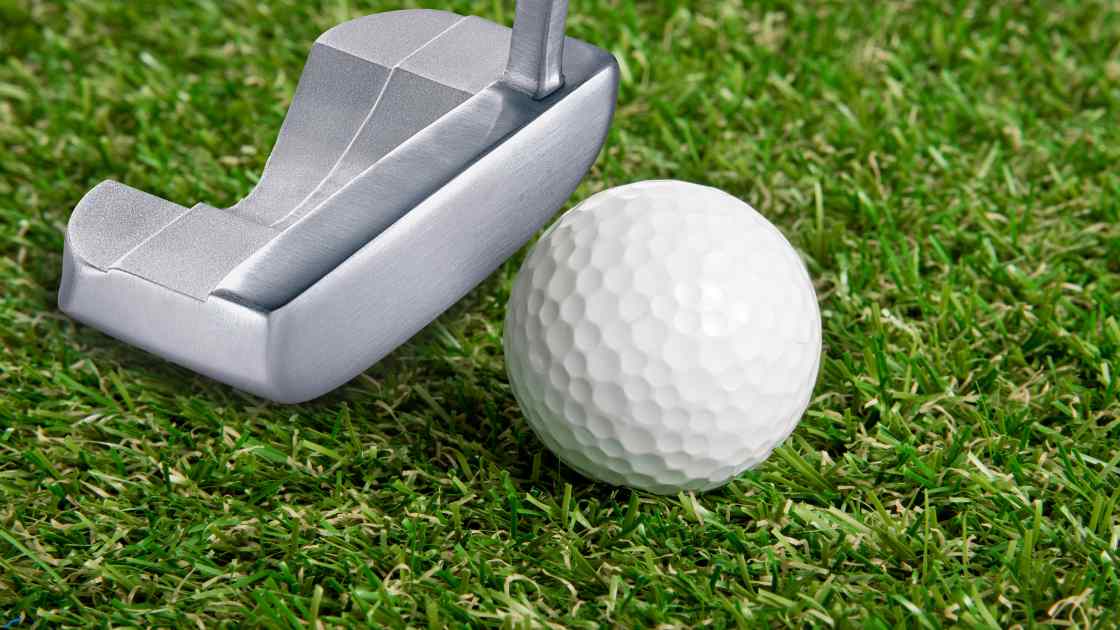


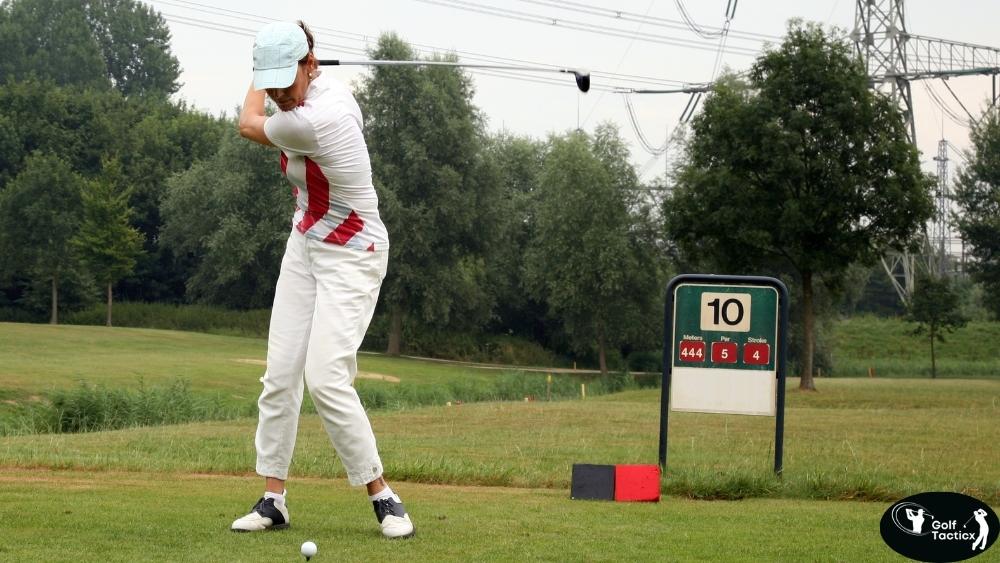


Leave a Reply